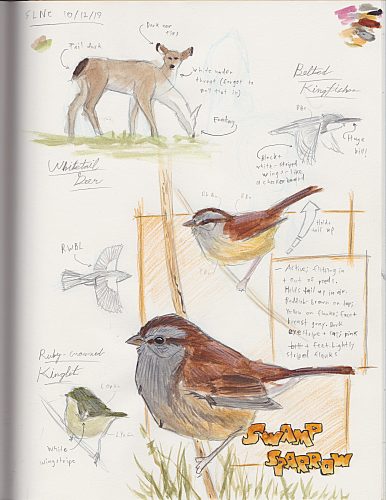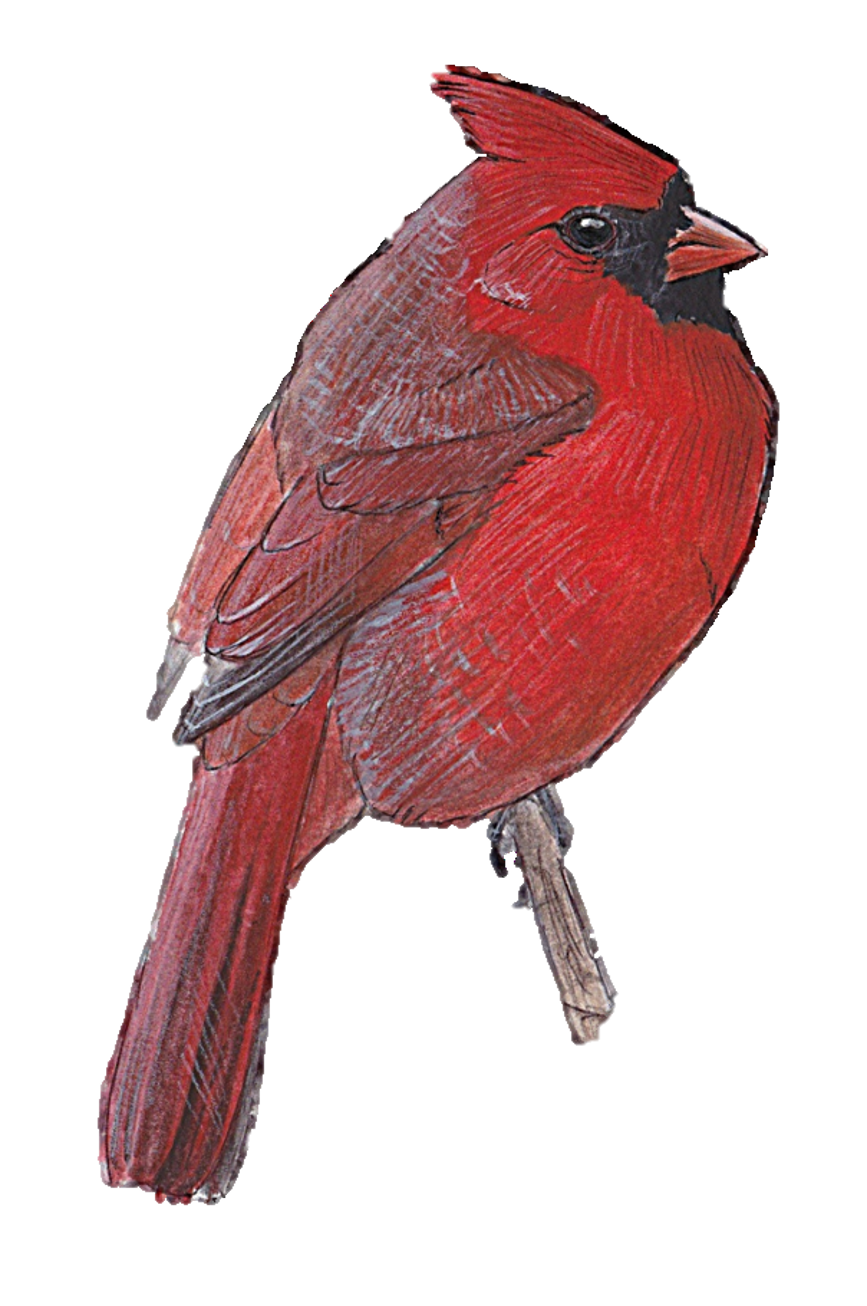Nature journaling—the process of keeping a notebook of your nature sketches, observations, and questions you ask about the natural world—is, I believe, one of the best ways to explore God’s creation. Journaling gives you room to think on a page about your subject, ask as many questions as you please, and make connections between things. This process helps you to comprehend what you’re looking at with a much greater level of perception than normal.

Getting Information on the Page- Nature journaling is built on three ways of translating the natural world onto your pages: drawing, writing, and quantification. Let’s look at each of these briefly:
Drawing– Sketching out what you see forces your brain to process information coming in through your eyes and then translate that data onto paper. This helps your brain to be actively involved in your nature experiences instead of checking out and throwing away important observations. Also, when you draw, you are forced to study your subject on a deeper level to accurately get it down on the page. You do not have to be a good artist to draw something or keep a nature journal. Let go of the feeling of having to get it perfect. Even if your drawing doesn’t look exactly like the subject, you will still have learned something new about it just from the process of trying to draw something.
Writing– We have another incredible tool to understand what we see around us—words and writing. There are lots of ways to integrate writing with drawing. Add little notes next to your drawings to point out key details. Compose a paragraph or two describing your experience. Write a poem. Some things are easier to convey with words, some with pictures. One is not better than the other; together they build on each other and make your page come alive.
Quantification (Math)– The last language for describing the natural world is math—counting, timing, measuring, and making graphs of data, among other things. I know, it sounds imposing, but mathematics is really just another way of translating what we see into something ordered and understandable (numbers). Using quantification in your journal pages can be as simple as noting the scale of relative objects, timing how long it takes for the turtle to cross the pond, or jotting down the length and width of something. Pack a measuring tape in your journal kit to allow you to find the dimensions of your subjects. Don’t be afraid to use math in your journal pages for noticing patterns too. Make a graph of different plant heights on a hillside, or the locations of various rabbit holes. Have fun with numbers out in the field and try a little quantification next time you’re looking for curiosity prompts.
Ideally, you want to have some combination of these three observation tools; how much you do of each is entirely up to you. Challenge yourself: write a poem here, do a thumbnail landscape there, or map out where the mushrooms grow with a graph. You will be amazed at what you discover and how your observations jump off the page.
Field Sketching and the “Pretty Picture”- One of the most enjoyable aspects of journaling is that it merges artwork and nature observation. Many people think that artwork is mainly about making a nice-looking picture. However, by that definition, your label as an artist is to make those pretty pictures. And if a piece of artwork that you make somehow doesn’t meet that standard (whatever it is), that artwork will be a failure.
If you make a pretty picture, that’s great. If you don’t make a pretty picture, that’s great too. What you want to focus on is learning something new about your subject. This is especially important in the field. Of course you want to do your best, but if your drawing doesn’t look exactly like that flower, that’s okay. Drawing something is an incredibly special opportunity to open the door to the unknown. If you are obsessed with making a book of nice-looking pictures of nature, you are missing the focus of nature journaling and artwork.
Tossing out this idea of the “Pretty Picture” takes an enormous amount of pressure off of sketching and playing with your subjects on the page. Let yourself accept your mistakes and move on to the next drawing. Remember, practice makes perfect! Draw regularly and your drawings will only get better.
Scientific Observation- The last fundamental building block for journaling is scientific inquiry. The cornerstones of science—observing, wondering, and making connections—are all right there in your journal pages. A good motto to remember (coined by my all-time favorite artist, John Muir Laws) is “INIWIRMO”– I Notice, I Wonder, It Reminds Me Of. Let’s break these down briefly:
I Notice: Getting down your raw observations on the page. All scientific exploration begins with observing a subject. Don’t filter anything out when you are observing because you may need that important clue down the road. Either write down or say out loud your observations to remember them better. Once you have a slew of observations down on the page, you will begin to see patterns and notice things that you had not seen before. This brings us to the next piece of inquiry: asking questions.
I Wonder: Asking questions is at the heart of being a good scientist. Approach the unknown with a sense of wonder and intentional curiosity, welcoming the chance to discover something new. Follow where your questions lead, and don’t be afraid to ask without limit. Writing down your questions locks them in your memory and frees up space in your brain for more inquiries to follow. In a future post, we’ll take a more in-depth look at asking questions and drawing conclusions from your observations.
It Reminds Me Of: The last step in scientific observation is making connections between things. See what pops into your head when you say, “Hmm, this reminds me of….” IRMO’s don’t even have to be scientific. You could be reminded of a poem or a previous experience that you had. Drawing connections between your observations helps to unify your thoughts and make new things seem more familiar.
The most important thing you can do to in nature journaling is to just get out regularly with your journal and sketch, write, count, and wonder. You will be amazed at the whole new level of curiosity and beauty that journaling opens up. If you are interested in a more in-depth look at how journaling works, I recommend master nature illustrator John Muir Laws’ post, How to Teach Nature Journaling. Till next time, happy sketching, and see you in the field!

